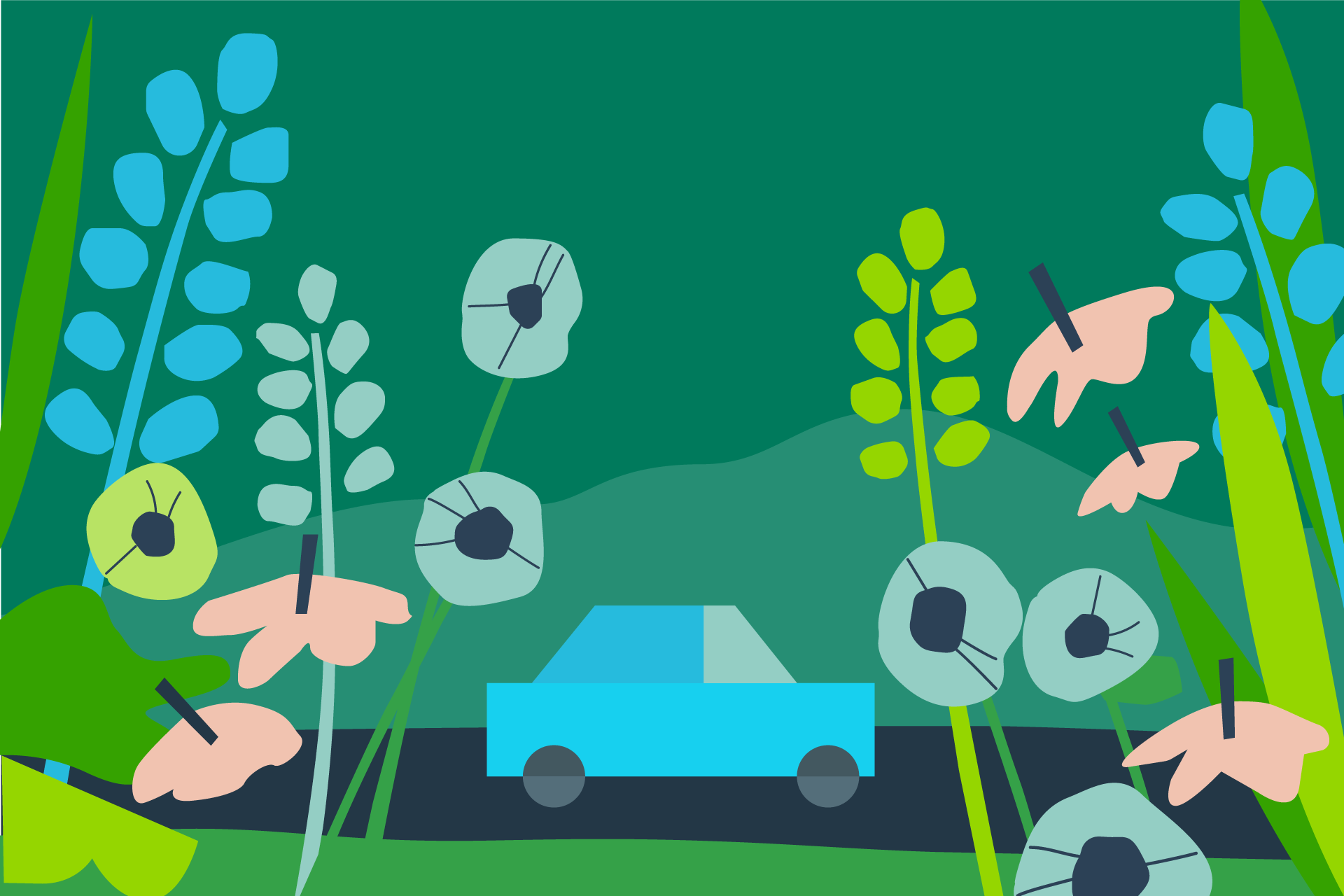Blinded by the light: tips for driving at dusk and dawn
June 2, 2022
Driving with the sun in your eyes is likely something we’ve all experienced at one point or another. The early morning school drop-off with the rising sun or the commute home during that golden hour sunset can make it difficult to see the road ahead.
To help keep your commute
stress-free and safe, we’ll share how you can stay safe on the road during the hours of dawn and dusk.Sun up, sun down: the hours of dawn & dusk
Traditions, rituals, habits—we all have things we do every day. And just like us, the sun has something it does every day. It rises, brings light and warmth to our planet, helps plants grow and eventually, it sets.
And as our day begins and ends, the way the sun sits in the sky can play a role in our daily driving habits. Two key times of the day? Dawn and dusk (which surprisingly don’t actually come with a specific time).
There’s not a consistent time for dawn and dusk because the sun rises and sets at different times, depending on the season of the year. For example, during the spring and summertime, the sun sets much later in the day compared to fall or winter.
A helpful tip? A quick search on the web or on your phone will give you the time of sunrise and sunset.
Knowing the time of sunrise and sunset can be good to know when you’re commuting because it can help give you an idea of whether or not you’ll be driving with the sun in your eyes. If you are going to be “blinded by the light” on your daily commute, you’ll want to know a thing or two about how you can manage driving in bright light.
Driving at dawn
Let’s start with your morning commute. You have your cup of coffee, and your driving playlist is helping with that early drive. That is until you hit bumper-to-bumper traffic and are now driving in bright sunlight with it in your eyes, making it difficult to see.
To help you navigate potential moments of the early morning sun in your eyes (dawn), here are a few quick tips to keep in mind before you hit the road.
Make sure your windshield is clean, inside and out
Wear polarized sunglasses, if the sun is in your eyes
Take advantage of that flip-down visor
Be aware of your surroundings and slow down
We’d argue that tip four is one to pay the most attention to because when the sun is in your eyes, it can be difficult to see what’s ahead—like a light turning from yellow to red or someone on a bike sharing the same lane you’re driving on. Taking your foot off the gas and slowing down during times the sun is in your eyes can make for a safer and more mindful drive.
Driving at dusk
Chances are good that you’ve driven at dusk at one point or another. It’s generally a time when you’re commuting home from work or a summer evening concert, where the sun just hits a certain way to feel “blinded by the light.”
Compared to dawn, dusk may actually be a more dangerous time to be on the road. According to the, National Safety Council (NSC) the peak time of day for accidents (fatal and nonfatal) in 2020 was between 4 PM–7:59 PM. However, depending on the time of year, the time of dusk can vary, making peak crash periods different.
The NSC mentions that during the spring and summer months, fatal crashes tend to peak between 8 PM and 11:59 PM. And from October to March, the peak for crashes was from 4 PM–7:59 PM.
What do both of these times have in common? They’re aligned with the time of sunset and dusk. If this time of day is known for more accidents, the first question that comes to mind is why? The National Safety Council (NSC) has some thoughts on the topic.
Vision changes. Your eyes will naturally have a period of adjustment as the sun sets, so it’s important to give your attention to the road and allow your eyes to adjust accordingly.
Fatigue. If you’re running on limited sleep, driving drowsy can affect your decision-making ability, and with the sun setting, that may contribute to any sleepiness your body is experiencing. Pull over if you are struggling to stay awake while driving.
Rush hour. After a long workday, congested roadways and folks eager to get home can make for a dangerous time to drive. Slow down and stay focused.
Of course, it doesn’t help that dusk, when sun glare is usually the worst, can impair a driver’s ability to stay focused. Believe it or not, that sun in your eyes can be a big distraction—just like your phone or snack you’re trying to eat while driving. To help guide you through the bright light, here are some tips for driving at dusk.
In addition to the driving at dawn tips, there are two key things to consider when you’re driving at dusk. The first is to turn your vehicle’s headlights on as soon as you start noticing the sun is setting. This will help you drive at night and help other drivers be aware of your vehicle on the road. Second, limit your distractions. Driving at dusk or twilight can be difficult for drivers—you’re tired and ready for the day to be over—and that can make the distraction of wanting to check your phone or eat a slice of the pizza you’re taking home for dinner more tempting.
Shine bright on the high road
Driving at dusk and dawn is something each of us has or will encounter at one point in time on the road. Having the know-how to handle these driving conditions can help make your commute as stress-free as possible for you and others on the road.
Because driving less distracted, smoother and safer is something we’re big on at HiRoad, we invite you to join us on the high road. With safe, smooth moves on the road, you can be rewarded in big ways (up to 50%* off your monthly insurance bill).
The information in this article was obtained from various sources not associated with HiRoad®. While we believe it to be reliable and accurate, we do not warrant the accuracy or reliability of the information. HiRoad is not responsible for, and does not endorse or approve, either implicitly or explicitly, the content of any third party sites that might be hyperlinked from this page. The information is not intended to replace manuals, instructions or information provided by a manufacturer or the advice of a qualified professional, or to affect coverage under any applicable insurance policy. These suggestions are not a complete list of every loss control measure. HiRoad makes no guarantees of results from use of this information.*The discount applies to the variable portion of your premium. A fixed expense is added to that to determine your final premium.
Stay on the path
Get HiRoad in your inbox
Share your email to get the latest about our community of mindful drivers.



